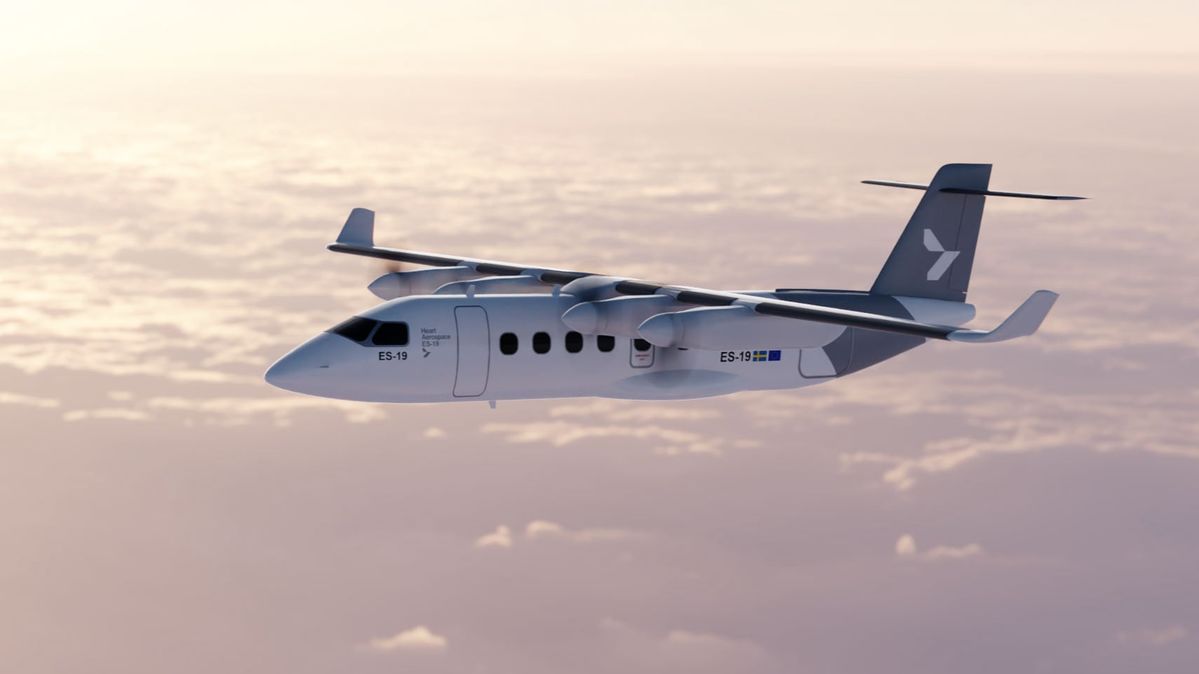Nordic nations set the pace in push for electric planes
Iceland aims for carbon-free domestic flight by decade’s end, while Sweden’s Heart Aerospace targets 2026 for e-plane approval.

The Nordic region’s pace-setting push into green transport is set to extend from cars to the air-travel market.
Iceland this month signaled plans to move toward carbon-free domestic flights by the end of the decade, while Sweden’s Heart Aerospace aims to deliver an electric plane specifically designed to ply routes linking remote Scandinavian settlements within six years.
Coordinating the region’s initiatives is the Nordic Network for Electric Aviation, founded last year and tying together airport authorities and five airlines including Finnair, Icelandair and SAS, alongside Heart and other technology innovators.
The emphasis on cleaner flights follows Norway’s strides toward banishing the combustion engine, with more than half the cars sold there now electric.
“We have an opportunity here to show the world what’s possible, and also to give the industries in our countries the opportunity to be front-runners and build this market,” said Maria Fiskerud, the NEA’s project manager and former adviser to the Swedish government on aviation biofuels.
The group has received 12 million kronor (US$1.4 million) in combined funding from its members and the governments of Sweden, Denmark, Norway, Finland, Iceland and Greenland.
Thin routes
Iceland’s plan to embrace electric planes is being led by its parliament’s environment and transport committee, which has asked the government to establish a group of experts to lay the groundwork for environmentally friendly domestic services by 2030.
While Norway’s success in encouraging electric autos has been driven by generous tax incentives and concern about the economy’s reliance on oil production, the region’s focus on greener aviation is more directly rooted in the unique nature of a market characterized by flights between sparsely populated areas with limited surface transport links.
Iceland’s compact size makes it particularly well-suited to first-generation electric aircraft, which will be limited in passenger capacity by the weight of batteries needed to get even a small number of people off the ground.
Fiskerud said Icelandic domestic trips offer the perfect testbed, since “routes are all within an hour’s reach.”
The greater size of Sweden, for example, might be too much of a stretch for early models so that a pledge to render its domestic market fossil-free by 2030 is likely to require a mix of electric planes, sustainable jet fuel and possibly hybrid technology, she said.
Icelandair Chief Commercial Officer Jens Thordarson said he’s enthusiastic about the application of electric technology, especially in light of the island’s abundant geothermal and hydro-power green-energy resources.
The carrier’s domestic arm Air Iceland Connect currently uses three 37-seat Q200 turboprops and two 70 seat Q400s from Bombardier, now De Havilland Canada.
“We’re still a long way away from being able to have electric long-distance flights,” he said in an interview. “However many projects are underway for developing aircraft for shorter distances. Being able to utilize electric planes for domestic flights would change the business.”
Thordarson said a plane carrying about 20 people using locally sourced electricity could even be cheaper to operate than kerosene-powered models, opening up the prospect of increased frequencies with fewer passengers than existing services in order to keep down takeoff weights.
Heart's 19-seat e-plane
Heart, based in Gothenburg, plans to win certification for its ES-19 regional plane by 2026, according to the company’s website.
The model, named for its 19-seat capacity, will have a range of about 400km and feature a conventional wing and propellers. It will be able to operate from a runway as short as 800 meters.
Thordarson said it may take two or three years beyond certification to establish the reliability of electric planes for commercial services and for them to enter mass production.
Airport infrastructure will also need to be adapted to provide adequate access to charging, and the reduced performance of batteries in cold climates must also be addressed, he said.
Government support may be required, paralleling that provided for eco-friendly vehicles. Norway, which aims to turn domestic flights all-electric by 2040, is looking at making subsidies for individual routes conditional on switching away from fossil fuels, or offering tax incentives for electric services.
The Nordic region’s combination of ready access to renewable electricity, high relative wealth and geography favoring smaller planes will provide a litmus test for the viability of carbon-free flying more generally, Fiskerud said.
“This is a good part of the world to start working with electric aviation,” she said. “If we can‘t do this here then it is difficult to see where it can be done.”
Also read: Airbus reveals 'zero emission' commercial aircraft concepts
This article is published under license from Bloomberg Media: the original article can be viewed here
Qantas
19 Apr 2012
Total posts 1429
I note that the current seaplane test flights Sydney to Canberra plan to go electric using the six seat converted dehavilland beaver (by oEviation) electric planes in the next couple of years.
Hi Guest, join in the discussion on Nordic nations set the pace in push for electric planes